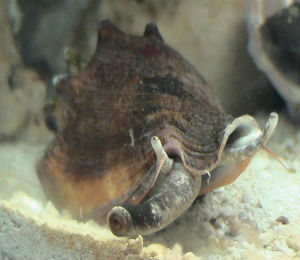There is an astonishing variety of things to do in Freeport Bahamas, and one of the most popular is exploring the amazing world beneath the sea, whether on a snorkeling or scuba diving trip or on a visit to the incredible marine habitats of Paradise Island. Deeply embedded in island history and folklore, the intriguing queen conch is one of the region’s most fascinating marine creatures.
Bahamas Conch Appearance
Bahamas Conch Eating Habits
Bahamas Conch Habitat
Conch generally live 20 to 30 years, but have been known to reach the ripe old age of 40, with adult growth concentrated in thickening the shell instead of increasing in size, thus improving protection against predators. Though queen conch shells are brightly colored inside, the outside is sand-colored, designed to provide camouflage in their natural habitat.
The queen conch’s life cycle begins when the female lays thousands of eggs in a sandy egg mass. After five days, the larvae emerge and drift off on ocean currents eating plankton for up to a month, finally finding a sandy habitat on the sea floor. During the conch’s first year, it hides under the sand during the day, emerging at night to feed at the surface. A relatively slow growing animal, it will take up to five years for a conch to reach full maturity.
Unfortunately, overfishing and poaching has caused the queen conch population to decline, particularly in areas like Haiti and Honduras. The animal is highly desirable not only for its meat and use as fishing bait, but also for the high demand for the shells in jewelry or as conch trumpets and souvenirs.
Best-Travel-Links
The Big Travel-WebDirectory

